10 FREE THINGS TO DO IN SRI LANKA
Sri Lanka is the small tear-shaped island just off the southeast coast of India. Formerly known as Ceylon, Sri Lanka is probably most famous around the world for its teas. Anytime you see ‘Ceylon Tea’ written on a tea package, that’s where it comes from.
Modern Sri Lanka just emerged from a 30-year civil war in 2010, leaving the country more readily open to international travelers again, after an entire generation of danger warnings. Meanwhile, despite the ongoing war, Sri Lanka has always been very popular with European travelers, due to its close proximity to Europe and its British and Dutch colonial historic presence.
Sri Lanka offers an impressive variety of things to see and do, including visiting famous tea plantations, riding historic hill country railroads, surfing, lounging on beaches, exploring ancient temple ruins, and adventuring through impressive national parks teeming with wild animals and birds.
Sigiriya Temple- Sri Lanka
Quite unfortunately, especially for budget travelers, the majority of Sri Lanka’s most impressive sights charge hefty admission fees that rival or exceed entry fees for comparable sites in US and Europe. Particularly expensive are Sri Lanka’s national parks and ancient temple sites. Considering that Sri Lanka is a poor developing country, emerging from a long devastating war, I personally think those fees are simply outrageous.
Fortunately, Sri Lanka also offers many wonderful free things to see and do. I certainly took advantage of those activities and destinations when I traveled around the country for one month. The free activities allowed me to visit Sri Lanka on a limited budget, to immerse myself in the country’s beautiful nature, and explore its colorful culture.
Following are my10 best recommendations:
1. Climb Adam’s PeakAdam’s Peak is Sri Lanka’s most famous holy mountains, located just a few hours from the capital, Colombo, in the south-central hill district. Thousands of locals climb the mountain as a religious pilgrimage. Most hike up during the night in order to reach the peak for sunrise, a distinctly Asian style of mountain climbing. They carry lights, which creates a long winding glittering trail up the entire mountainside every night.
Visitors are most welcome to climb Adam’s Peak, along with the throngs of pilgrims. It’s also perfectly fine to hike during the daytime, which is my own personal preference. The hike takes 2-4 hours each way. The route is almost entirely by stairs and sections of steep trail, which are all very clearly defined. There’s no chance of getting lost along that mountain highway!
Your only expense will be transport getting there and out, plus a room at the base of the mountain, in a little village set up entirely for the pilgrims. Dozens of stalls sell food, drinks, snacks, and religious offerings.
——————————————————————————————————————–
2. Visit a historic hotel or 2 or 3
Sri Lanka has a long, fascinating history of colonization by the Brits and the Dutch. The British established and developed the country’s tea industry while the Dutch set up the stone Fort Town of Galle, on Sri Lanka’s southwest coast.
Throughout Colombo, the hill district, and Sri Lanka’s southern region many historic colonial hotels, estate houses, and shop houses (in Galle) are still proudly standing. Travelers can visit many of those colonial buildings simply by walking inside and looking around.
The most famous and interesting historic hotels that I visited are Galle Face Hotel in Colombo, The Grand Hotel in Nuara Ellia( hill district), and Bentota Beach Hotel in Bentota (southwest coast). The Galle Face Hotel and Grand Hotel are excellent examples of grand British colonial architecture in Sri Lanka.
On the other hand, Bentota Beach Hotel is not a colonial building at all. It was designed by Sri Lankan architect, Geoffrey Bawa, who is one of the world’s most famous tropical architects. Bentota Beach Hotel is one of his most gorgeous hotels in Sri Lanka.
If you’re at all interested in architecture, design, or luxury this hotel is well worth a visit and look around. Admire Bawa’s intriguing architecture, splendid interior design, gardens, and the artwork on display throughout the hotel.
——————————————————————————————–
3. Learn all about tea and wander through terraced tea plantations
Sri Lanka’s hill district is carpeted with beautiful terraced tea plantations. Perhaps the most famous is Lipton Tea’s original plantation near Haputale, which still grows and sells a variety of teas.
Some plantations charge fees for tours, but others offer free comprehensive tours of their tea processing and production factories then serve guests a sample cup of tea and allow them to wander around the plantations on their own.
You can easily reach several large tea plantations with free tours from Kandy, Haputale and Nuara Eliya, either by walking the roads, catching a local bus, renting a bicycle, or hiring a taxi. My favorites were Dabutenne Estate near Haputale and Lancoolie Estate near Nuwara Eliya.
——————————————————————————————————————–
4. Hike to Lipton’s Seat
Lipton’s Plantation also has another famous feature: Lipton’s Seat. It’s the spot on top of the mountainous terraced plantation where Mr. Lipton used to sit and look over his properties. It’s also one of the highest look out points is Sri Lanka, with stunning views over the hill country on clear days. Visitors are welcome to hike up to Lipton’s Seat, at no charge.
It’s a wonderful but strenuous 2-3 hour hike up steep switch-back roads through gorgeous tea bushes all the way to the peak. En route you’ll pass busy tea pickers who’ll be curious to see you and will point the way to Lipton’s Seat. Reach Lipton’s Estate from Haputale by walking or taking a local bus.
——————————————————————————————————————–
5. Visit Sri Lankan temples- Kandy
Kandy’s most famous and popular Temple of the Tooth Relic, supposedly holds one of Buddha’s teeth. Hundreds of Buddhist pilgrims and non-Buddhist tourists flock there every day to go inside and peak at Budda’s holy tooth. Unfortunately, this temple charges exorbitant fees to tourists.
Never mind, Kandy has plenty of other fascinating temples that are entirely free! Just across the lake from Temple of the Tooth Relic is a small, sprawling old monastery with lots of character and a very interesting museum. The monks are happy to give you a tour of the museum, explaining all the artifacts. Visitors are also welcome to roam around the complex on their own.
In the middle of town there’s a very colorful, cute Hindu temple that visitors are also welcome to enter. Simply show up, go in, drop off your shoes at the shoe counter, and go inside. Vibrant wall murals and day-glow 3-D images of Hindu Gods decorate the interior of this charming temple.
Finally, a huge white Buddha Statue sits on the hillside overlooking Kandy. Walk up the hill to visit the temple and statue.
6. Walk around Kandy Lake and enjoy droves of birds and bats
Kandy is the historic seat of the ancient Kandy Kingdom. The town is set around a small, placid lake in the hills, just 2 hours inland from Colombo. One of the most enjoyable activities in Kandy is to stroll around the lake, which is rimmed by huge trees and several temples.
Large flocks of birds and bats have taken over the lakeside trees. In early mornings and early evenings, the lake area comes alive with the squawking, screeching, and tweeting of thousands of birds and swarms of flying bats.
——————————————————————————————————————–
7. Chat with locals
Striking up conversations with locals in the countries you visit is one of the best ways to learn about their daily lives, customs, beliefs, hardships and joys. You can also sometimes find out about great things to see or do that you won’t learn about in guidebooks. Best of all, it’s great fun for everyone!
In Sri Lanka, a majority of locals don’t really speak much English. But the owners and staff at hotels, guest houses, shops, restaurants, and museums do speak English. They’re generally very pleased when guests express an interest in their lives and sit down for a chat. In addition, some other locals here and there will surprise you by speaking English quite well, like one of these boatmen I chatted with on the beach of Wellingama town.
——————————————————————————————————————–
8. Hike in a beautiful forest
Much of the hill district is covered and sculpted by terraced tea plantations. But a few regions are covered in beautiful forests. One extensive forest sits at the base of the Horton Plains National Park, which rests on top of a high plateau. Visiting famous Horton Plains N.P. and joining a mandatory guided tour is very expensive.
However, the road leading up to the plateau starts at tiny Ohiya train station. It winds up the mountainside through a gorgeous forest, about 10 km to the top. You can walk that beautiful road entirely for free.
Ohiya Station is located halfway between Hatton and Haputale. You could hike up the forest road from Ohiya Station either as a day trip from from Haputale or else by stopping en route between Hatton and Haputale.
Just hop off the train at Ohiya Station and simply walk up the forest road, which is completely surrounded by dense jungle-y forest. You’ll pass locals walking up and down the road, often carrying bundles of wood, supplies, or goods for sale.
They’ll all look at you in wonder. Those on motorbikes, in trucks or cars, will ask if you want a ride. (for a price, no doubt) You’ll be escorted by charming bird songs and you might sight some very unusual monkeys, like I did.
You can walk all the way up to the plateau and gaze over the vast plains, or just walk up until you get tired and then turn around and head back down to the train station.
Be sure to check what times the train passes through before you start walking! Only a few trains per day stop at Ohiya Station, so make sure you catch one of them or you’ll be stuck overnight with no hotel or hostel in sight. A few small local huts at the station sell food and drink, so you can get a meal or two while there.
—————————————————————————————–
9. Enjoy Sri Lanka’s stunning beaches
Sri Lanka is entirely rimmed with beautiful beaches. Exposed to the vast Indian Ocean, most of the beaches are swept by wind and waves, making the country famous for surfing. The most popular beaches stretch along 1. Sri Lanka’s west and south coasts, below Colombo; 2. the central east coast; and 3. the west coast, just north of Colombo.
Beaches vary from small curved coves to long stretches of wide exposed beach. The most popular are much too over-developed for my tastes (akin to mini Kuta, Bali) but others are nearly empty and quiet. Some are inhabited almost solely by surfers, others by lounging vacationers, others by local and Indian tourists. Leaf through a guidebook or website on Sri Lanka to choose the beaches that suit you best.
Like beaches all over the world, Sri Lanka’s beaches offer a huge variety of free things to do: suntan, swim, walk or jog, watch sunrises and sunsets, strike up conversations with locals, join a game of frisbee or soccer or volleyball, do some people watching, relax and read a book or magazine. Enjoy the beautiful Earth!
——————————————————————————————————————–
10. Wander Galle’s fort wall and charming streets
The Dutch left behind a wonderful souvenir in Sri Lanka: Galle Fort Town. The original city is set within an imposing V-shaped stone wall that juts into the Indian Ocean, about 50 km south of Colombo. The entire town is still composed of its original houses, shops, hotels. Many have been lovingly restored into boutique hotels, gourmet restaurants, shops, and guest houses. Galle also has an attractive lighthouse standing guard over the sea at Galle’s easternmost point.
Wandering around Galle’s little stone lanes, stepping into cute boutiques and museums, strolling the fort wall promenade along the sea, and striking up conversations with locals is fascinating. If you like that sort of place, you could easily spend a few days to a week just exploring the charming town.
QUESTIONS:
Have you traveled through Sri Lanka? If so, what were your favorite places or activities?
If not, which of these things would you like to do when you get a chance to visit Sri Lanka?
Do you have any other free tips for Sri Lanka?
——————————————————————————————————————–
If you found this post useful, you’ll love my FREE eBook, 100 Free Things to do in Asia. It describes 10 free things to do in 10 different Asian cities and destinations.
Check out my Free eBook here.
You might also enjoy my 4 photo galleries on Sri Lanka:
Galle / Tea and Trains / Kandy / Stormy South Coast
————————————————————————————————————————————-







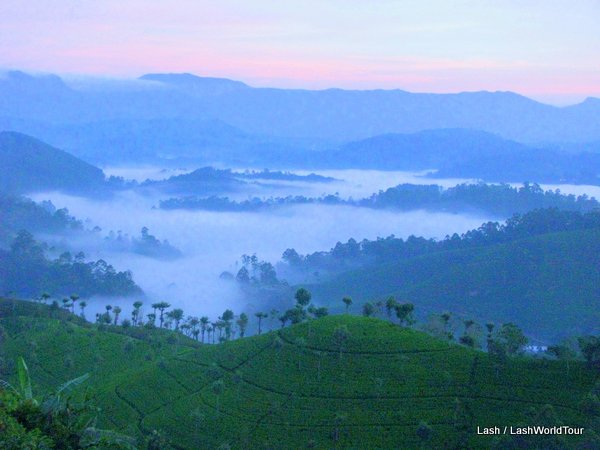
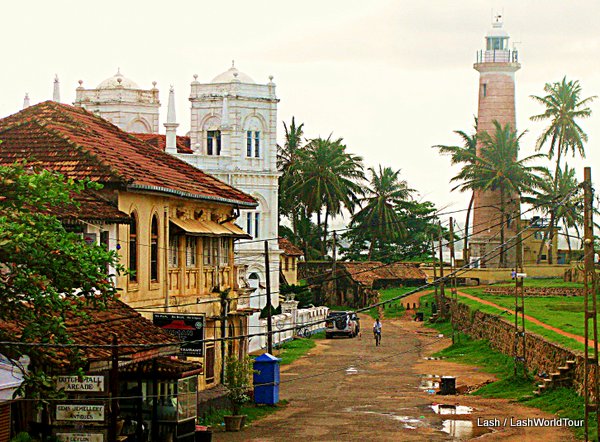
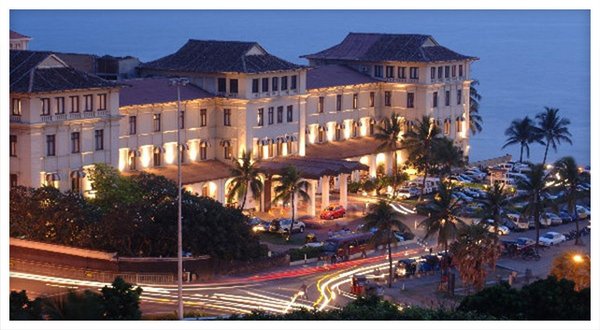
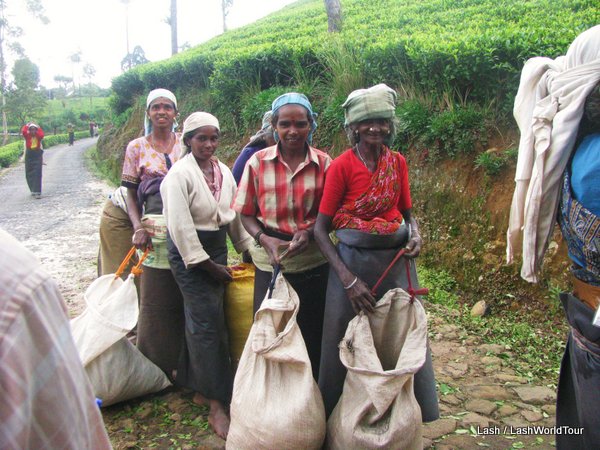
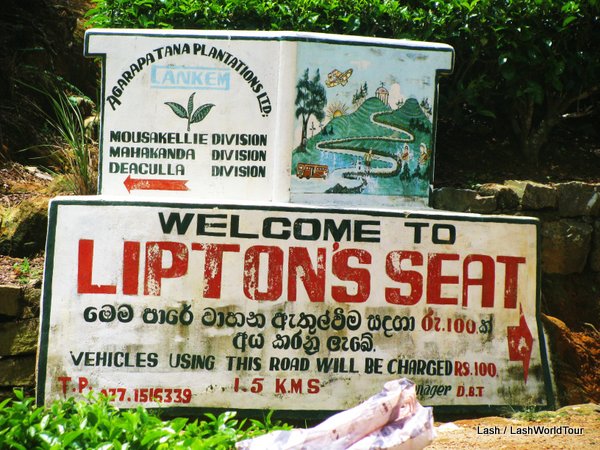
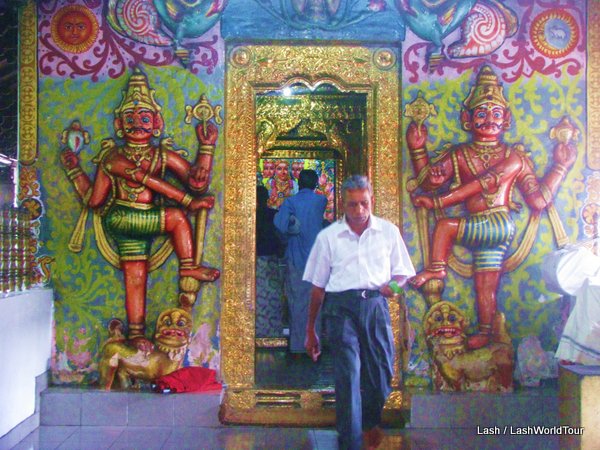
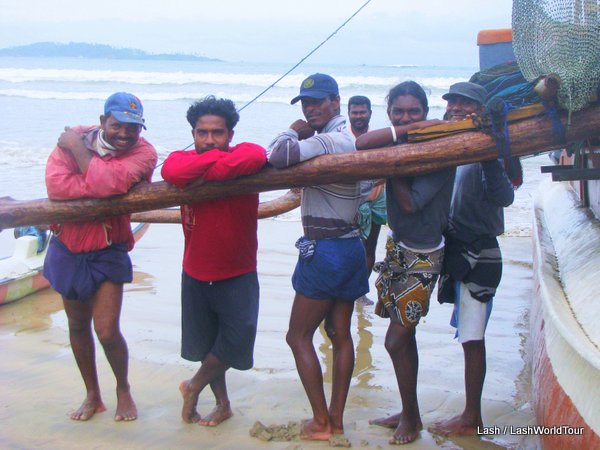

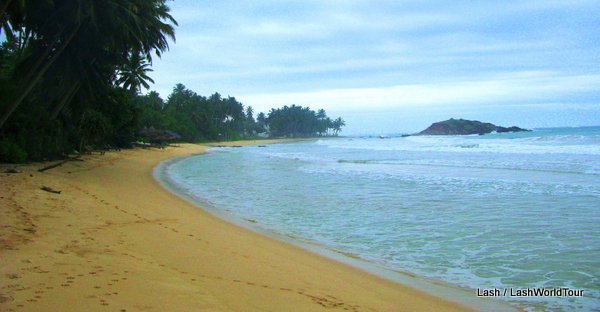
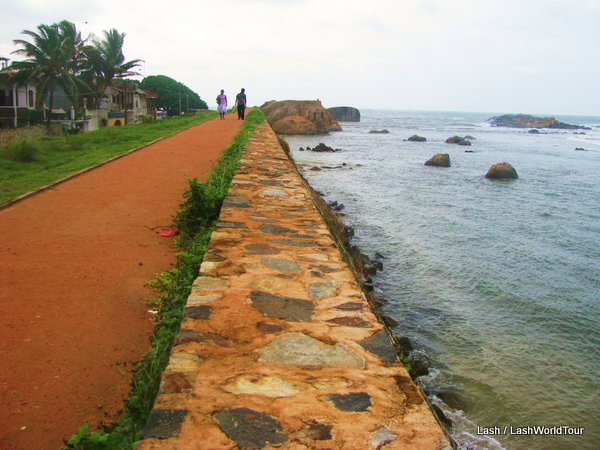

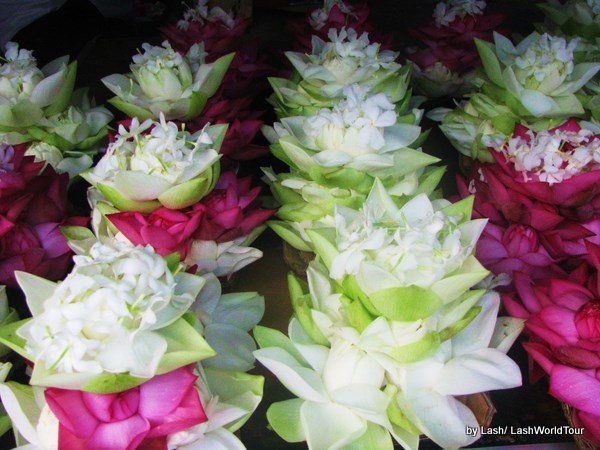

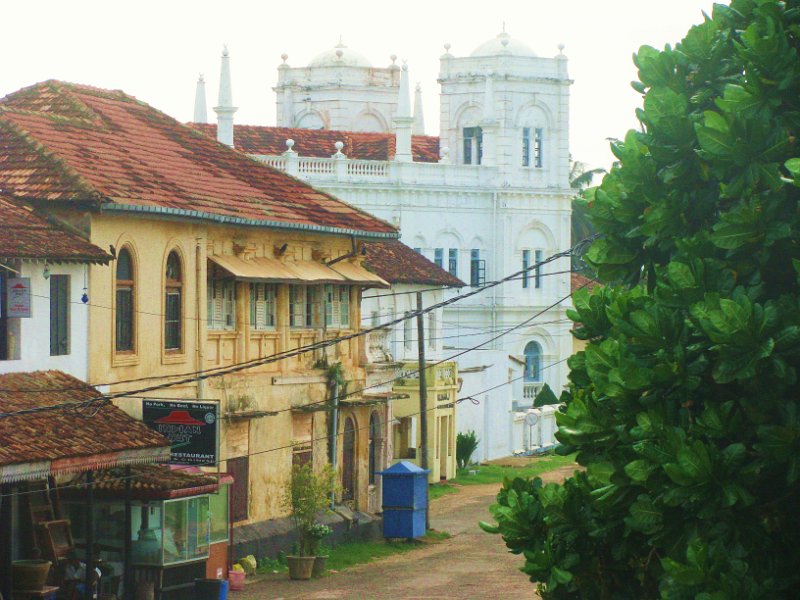
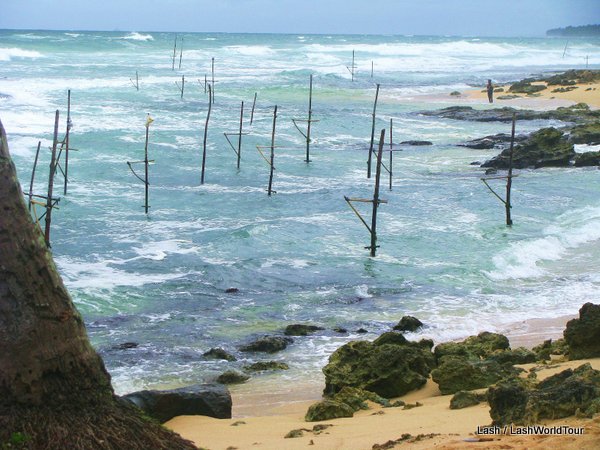

 Hi! I'm Lash, an American nomadic world traveler who's been traveling solo since 1998. I’m passionate about traveling the world nomadically and then sharing it all with you. I hope to inspire you to travel the world, to entertain you with tales from the road, and to help you reach your travel dreams. Welcome!
Hi! I'm Lash, an American nomadic world traveler who's been traveling solo since 1998. I’m passionate about traveling the world nomadically and then sharing it all with you. I hope to inspire you to travel the world, to entertain you with tales from the road, and to help you reach your travel dreams. Welcome! 




11 pings
Skip to comment form ↓
PHOTO GALLERY: Images of Sri Lanka - LashWorldTour » LashWorldTour
2013/05/06 at 4:36 pm (UTC 8) Link to this comment
[…] 10 Free Things to do in Sri Lanka […]
PHOTO GALLERY: SRI LANKA'S STORMY SOUTH COAST - LashWorldTour » LashWorldTour
2014/10/06 at 9:39 am (UTC 8) Link to this comment
[…] 10 Free Things to do in Sri Lanka […]
Heavenly Views & Wildlife Wonders: A Guide to Sri Lanka - LashWorldTour
2019/08/06 at 2:22 am (UTC 8) Link to this comment
[…] you are travelling alone or with a group. Beaches are a great place to have an amazing time and not have to spend $100 in the process. Some of its famous beaches are Bentota on the west coast, Hiriketiya on the south, and Arugam Bay […]